|
Whilst having Victoria Park as an address was prestigious enough, I get the distinct impression that an address in the western half of the park was several notches higher. The 1844 OS map of the area shows that the Park had been laid out but that there were few houses in place. I have coloured the houses in red to make them easier to see at this size. 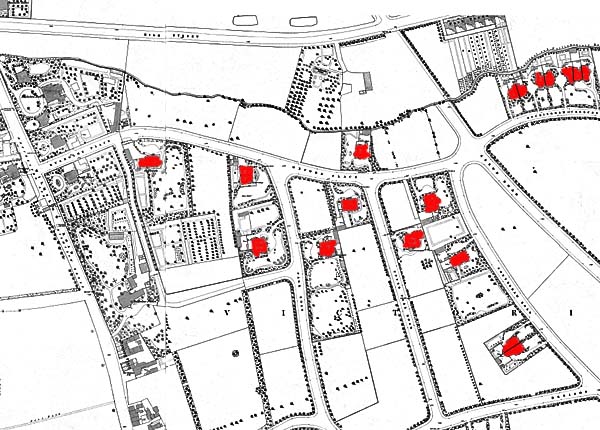 By 1889 the
situation was quite different. There were
houses on most of the building plots.
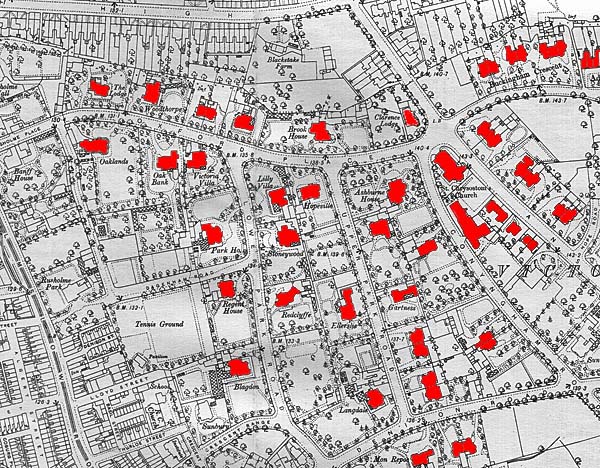 Over the
years many of these grand houses were demolished
and others modified when they were converted
into university residences, apartments or school
premises. Some still remain although their
condition leads you to wonder for how
long. What follows is a series of
photographs taken in 2014 and 2013 while I waked
along the main streets in this part of the park.
Oxford Place - Beginning at
the Anson Road End
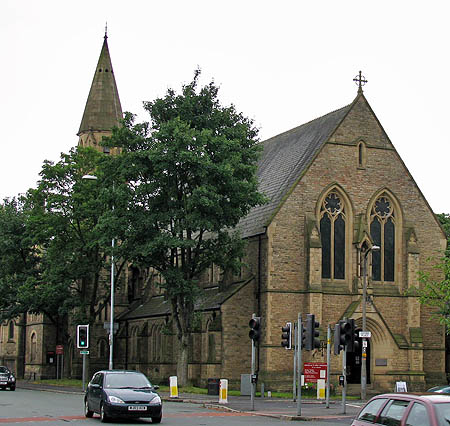 On the south side of the road is St Chrisostom's Church built in 1878 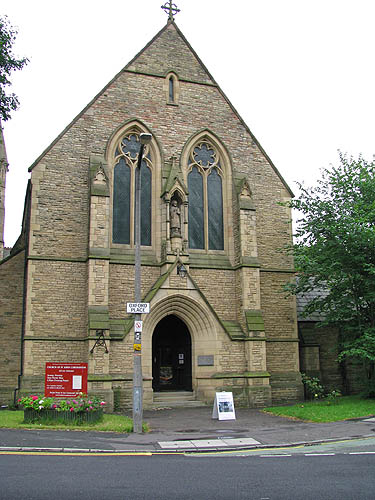 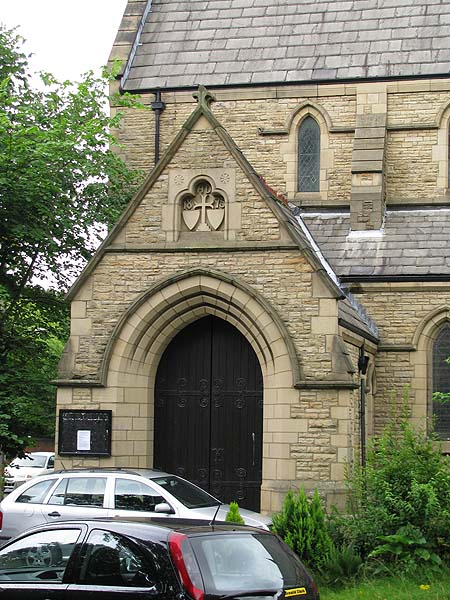 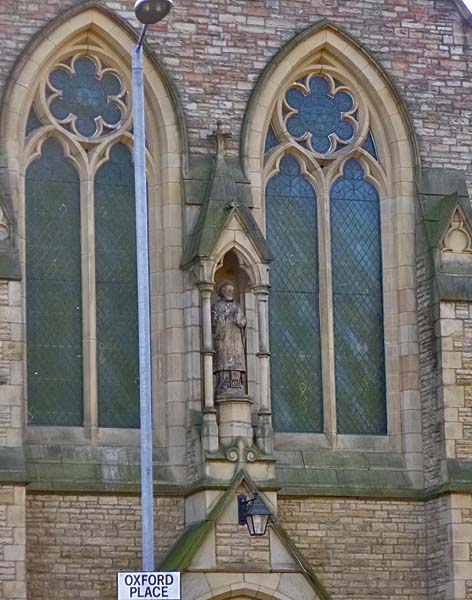 Across the way on the
corner with Anson Road is the house that has
its entrance on Anson Road and is number
2. The 1889 map appears to identify it
as Clarence Lodge although it isn't clear if
it refers to that house or the empty lot
next door.
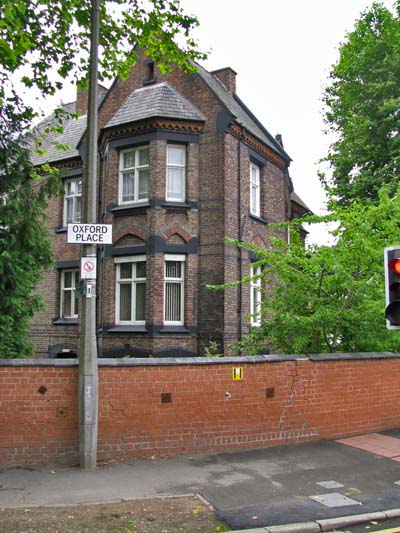 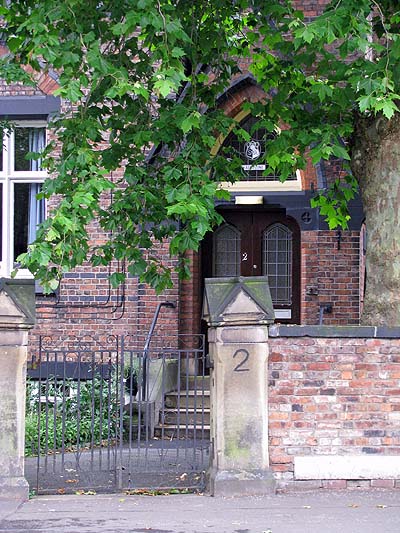 Above the entrance the fanlight contains the letters SMA and below that St Augustine. 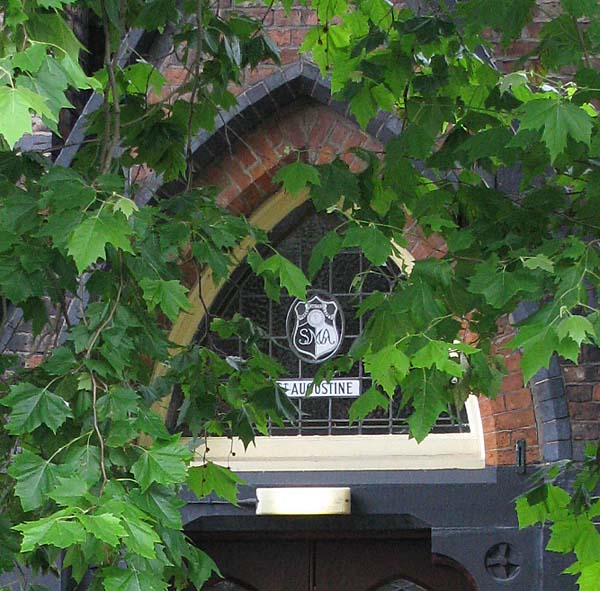 The SMA is probably
the initials of the Society of African
Missions and the St. Augustine sign
suggests that this building was home, at
some point, to clergy. If in the
1800s this was Clarence Lodge then it
was home to James and Louisa
Pooley who on February 24th, 1878
had their son baptised at St
Chrisostom's Church. The record
shows that Charles was a cotton
spinner. Which is quite
a modest job in an area of wealthy
merchants and artists.
When I saw the house again on a very sunny day in October of 2014 it was swathed in scaffolding. 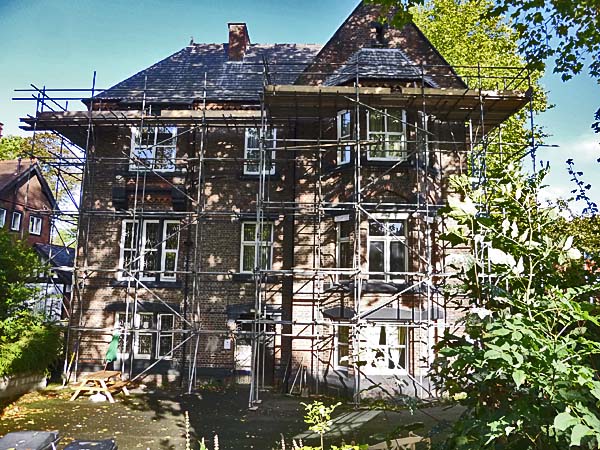 Next door is
Auldgirth, the name still visible on the
gatepost. Until recently this was
part of Manchester Metropolitan
University's Elizabeth Gaskell Campus.
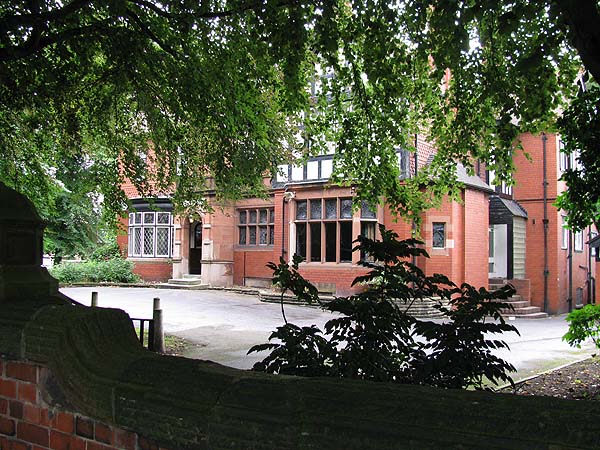 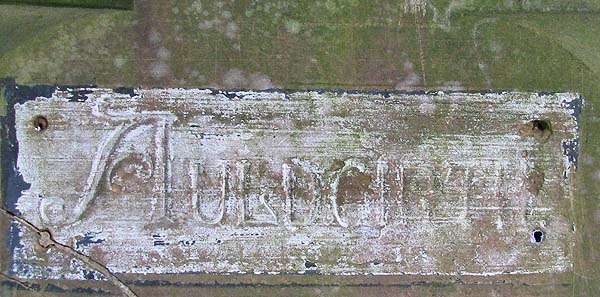 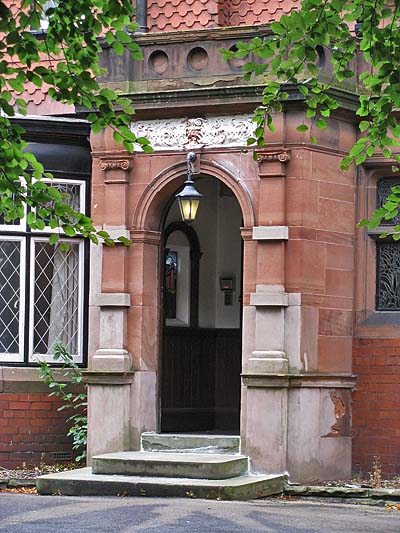 In October of 2014 it was boarded up following MMU's move away from Elizabeth Gaskell. 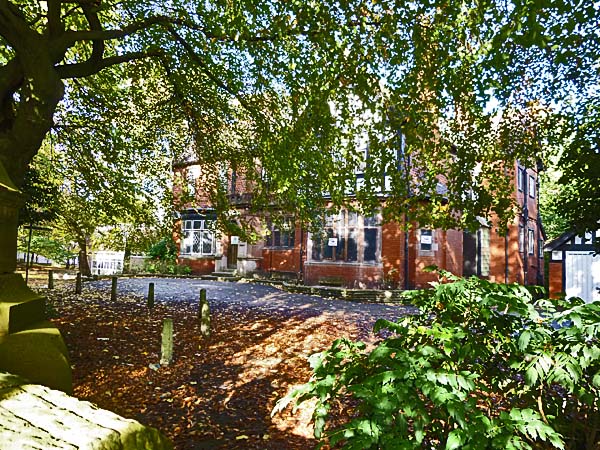 Next door is Brook House also once a part of the Elizabeth Gaskell Campus and also boarded-up. 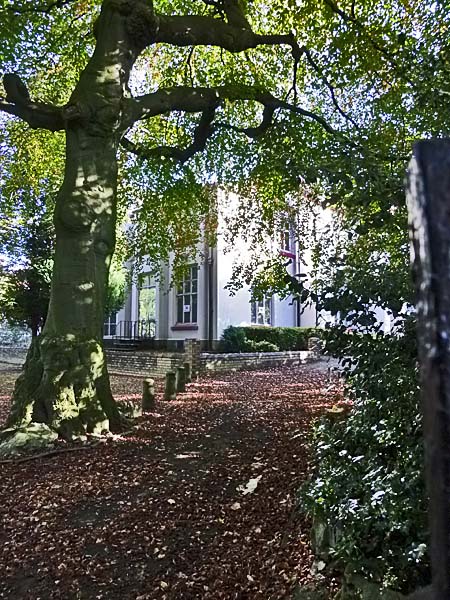 Here are some earlier views. 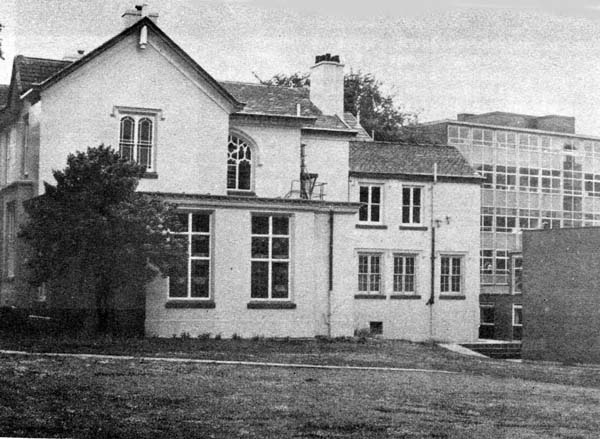 It can be seen in the top of this aerial view. 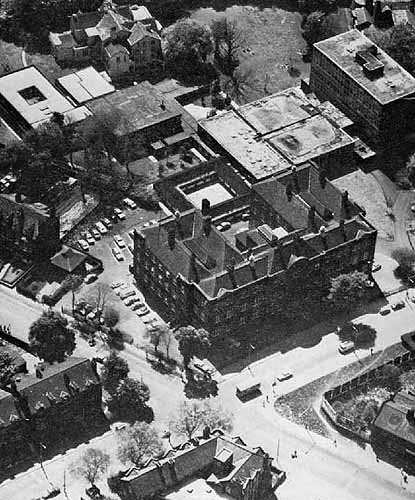 Across the road
stand a pair of houses with modern
additions. The first one
occupies the location of the house
called Hopeville on the 1889
map. The first photograph
taken from Oxford Place suffers from
the bright sunlight.
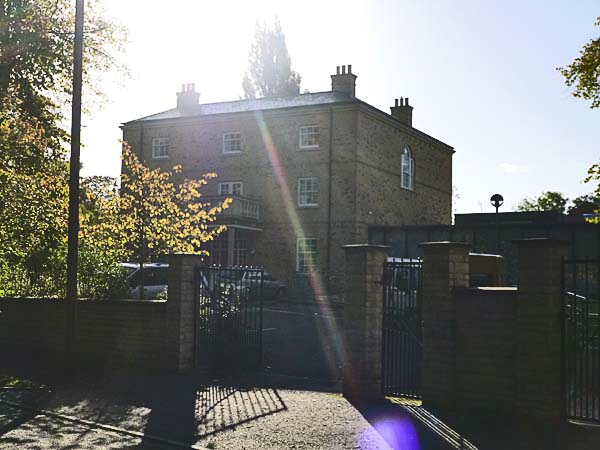 Here is a second view taken from Upper Park Road. 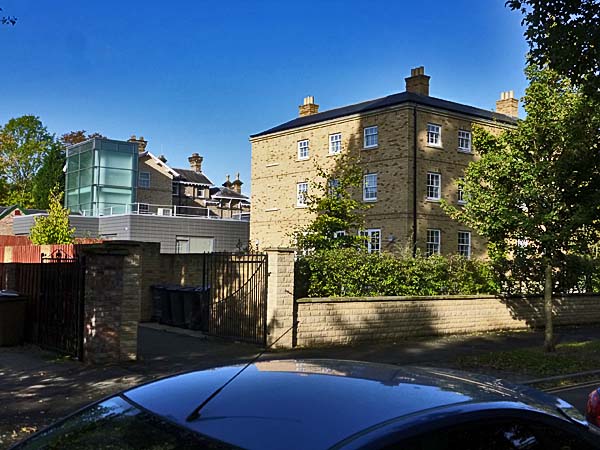 In 1878 Hopefield
was home to a merchant William
Samuels and his wife
Charlotte. Between 1837 and
1844 it had been home to George
Hadfield, Liberal MP for
Sheffield. In the 1970s it was
the Brookfield Hotel.
Next door is a
house labeled Lilly Villa on the
1889 map but today is known as
Greygarth. Its website says
that, " ... Greygarth
Hall is an independent hall of
residence situated in the
Victoria Park region of
Manchester. The hall was built
in 1868 and was converted into a
university residence in 1961.
Since then, it has been
providing accommodation for
university students in
Manchester from all corners of
the globe."
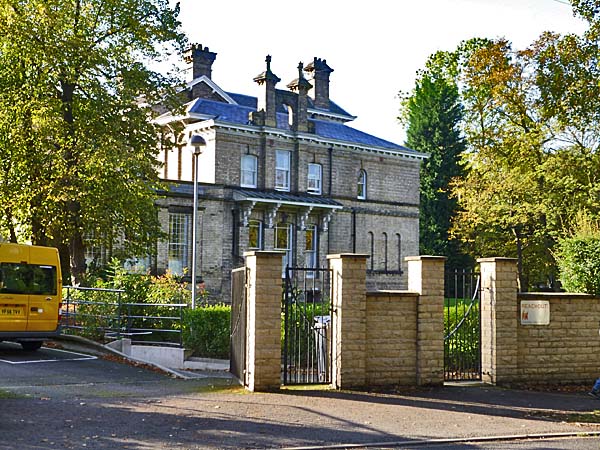 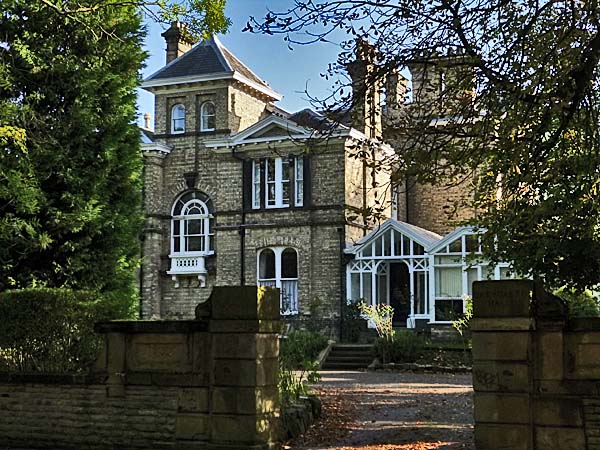 The Pevsner Guide for Manchester describes Greygarth Hall as, "1880-1890. Brick, eclectic Italianate style, with a tall staircase tower with a pyramidal roof. On the north side of the road, after Brook House, is Holly Bank. In 1880 it was home to Charles and Adeline Moseley. Charles was a manufacturer. Between 1891 and 1895 it was home to Rose Hyland famous as a suffragette. 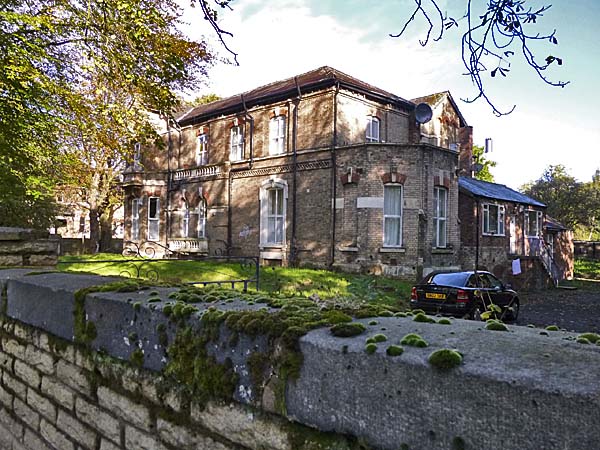 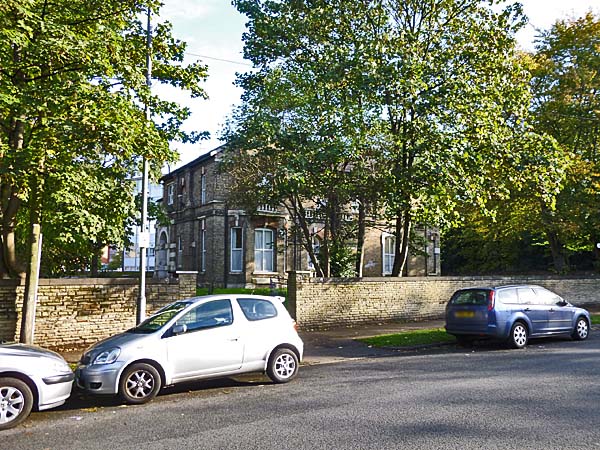 Next door is this
house is an advanced state of
neglect. The map suggests that
it was a pair of semi-detached
houses but clearly it was abandoned
in October of 2014 when I took these
photographs.
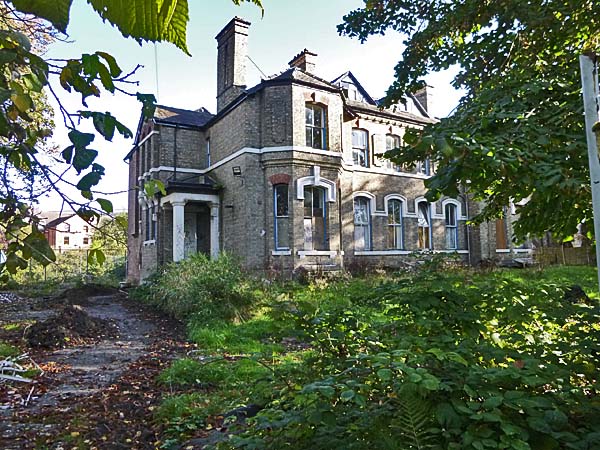 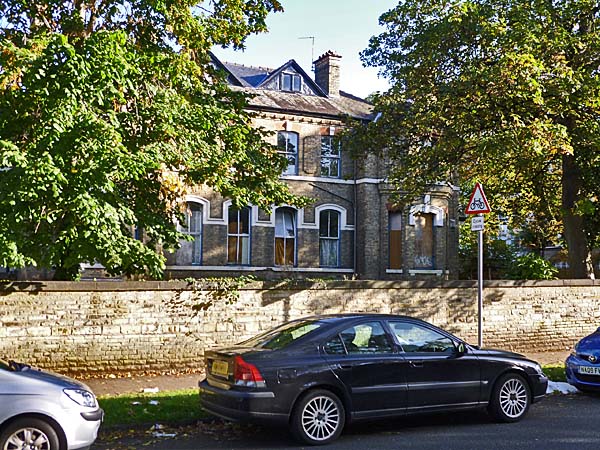 Moving along on
the same side of the street we come
to a female student residence for
the University of Manchester called
St Gabriel's Hall. It occupies
the site once home to Woodthorpe and
The Lodge. The Manchester
Pevsner Guide says that this hall of
residence is by Oakley &
Sanville, dated 1939. "Founded
by the Bolton Sisters of the
Cross and Passion as university
accommodation for former
pupils. The main part is
arranged on three sides of a
courtyard in the manner of
almshouses."
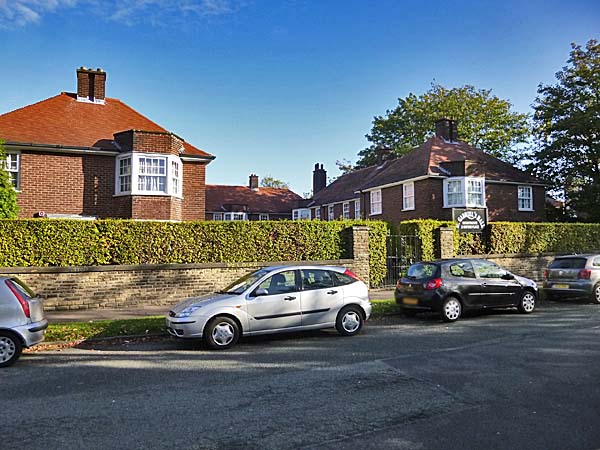 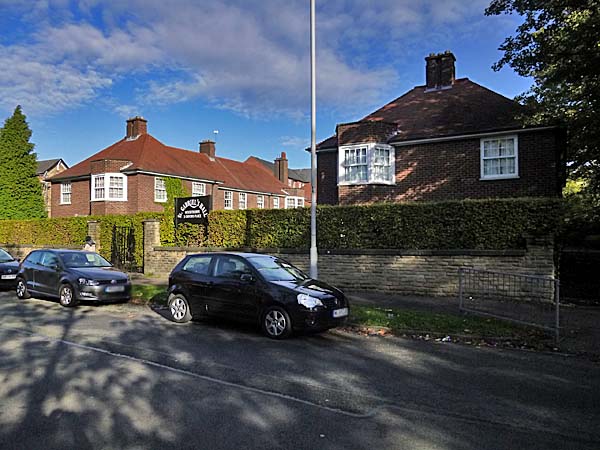 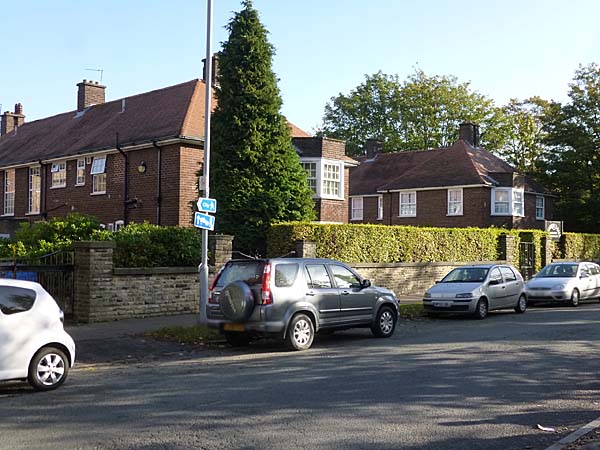 To the left,
Pevsner adds, is "... a
block by Reynolds &
Scott, 1963."
I wonder about this
description. There is a
chapel off to the left in the
image below and an extension on
the far right that could be from
the 1960s. The central
building though looks much older
and although "The Lodge", that
was once on this site, has
apparently been demolished, I
wonder if this might be a
remnant of the building.
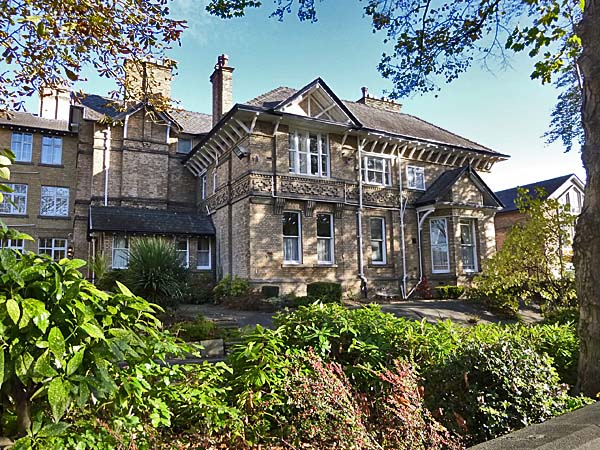 If you click
on the link below you can see
the same building on an image in
the Manchester Central Library
image collection. I was
taken in 1953 and shows the
Oxford Place Lodge.
Oxford Place Lodge John Slagg, MP for
Manchester, lived at The Lodge between
1855 and 1861. He also lived at
Woodthorpe between 1862 and 1874.
Across the road is Manchester Univerity's Hulme Hall Residence. This is a large site with a number of buildings of diverse ages. The evsner Guide is most interested in the "... inner quad with a charming L-shaped block by Percy Scott Worthington, 1906. Brick with stone dressing in a quiet domestic Tudor and Arts and Crafts idiom." 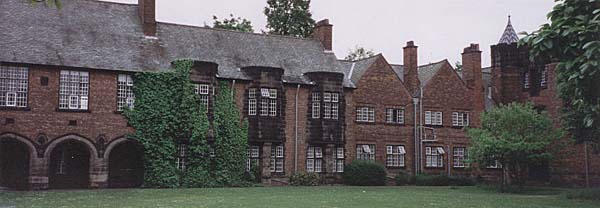 Other buildings on the site were added much later. 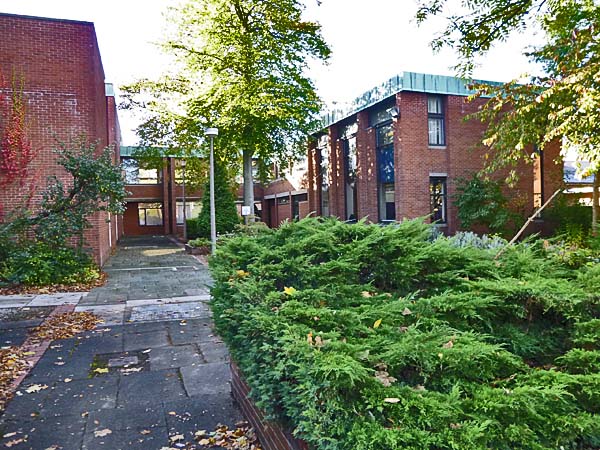 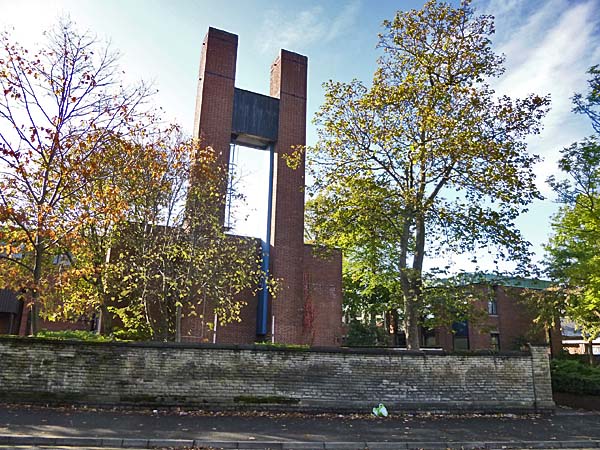 *************************** Lower Park Road 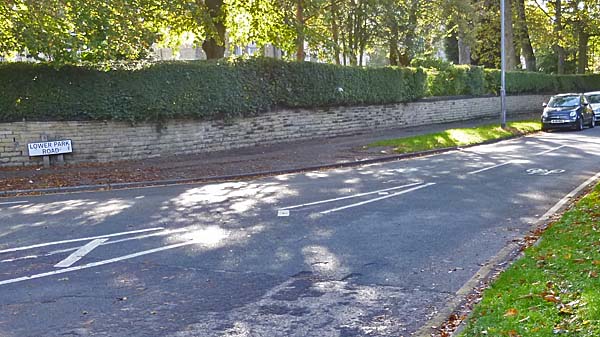 Just around the corner,
hiding in the trees, is a circular brick
building. The is the Hulme Hall Chapel
designed by Cruickshank and Seward and built
between 1966 and 1968. Pevsner
describes it as, "... Dark brown
brick and white window strips, a whorled
ovoid in plan with a low entrance block
on the left, behind which a taller
curving corridor wraps
around the rear and leads into the
chapel."
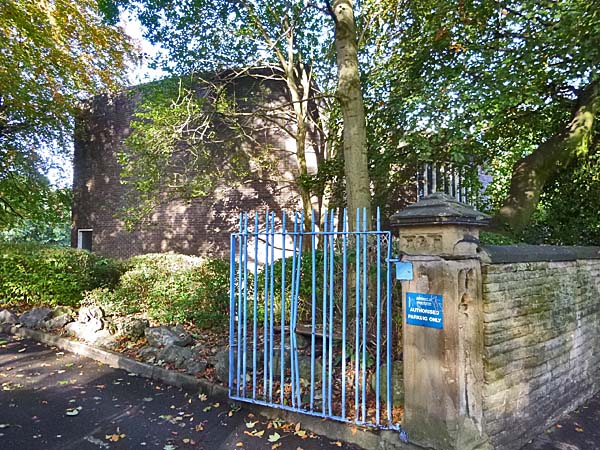 The gateway leads into the Hulme Hall site giving access to Park House. 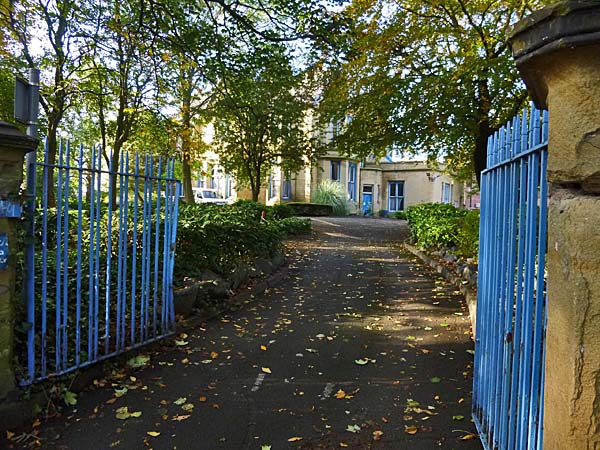 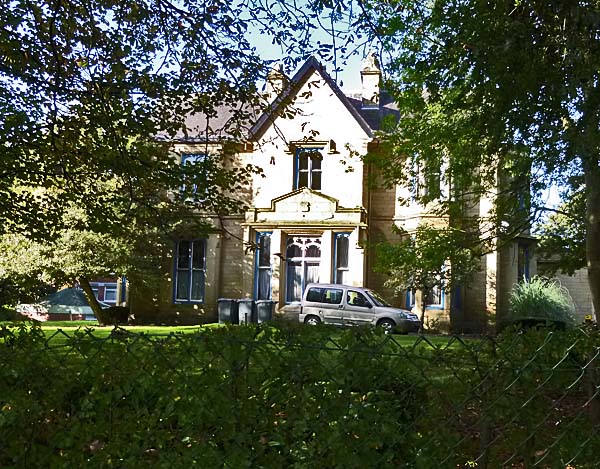 Further along on the left
is Ward Hall occupied by Xaverian
College. On the map the building on
that site was called Stoneywood.
 St Chrisostoms Church website has an interesting story about a former resident of Ward Hall. "One hundred years ago on 15th April 1912 RMS Titanic, sank on its maiden voyage when it struck an iceberg. The majority of her 2,237 passengers perished in the disaster. One survivor was Adolphe Saalfeld, a Manchester merchant and perfumier, who lived with his wife, Gertrude, in our parish in what is now Ward Hall, Lower Park Road, Victoria Park, within the Xaverian College. Saalfeld was of a German Jewish family and migrated to England in the 1880s." You can read much more about the story by following THIS LINK. Beside Ward Hall on land that was once home to Redcliffe, stands this modern building that is also part of Xaverian College. 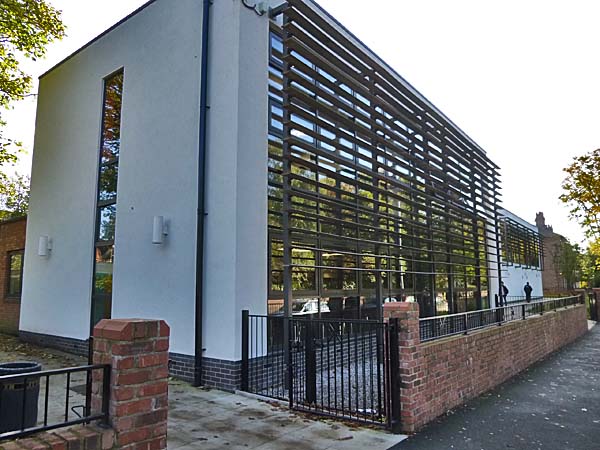 Across the street is yet
another part of the college in a building
they call Marylands. This was
originally Regent House built circa
1870. Pevsner describes it as, "...
Gothic, grey and yellow brick with stone
dressings. Tricky details with
much variety in the
texture and wall surfaces.
Splendid entrance hall with a Gothic
arcade and a gorgeous inglenook with
Arts and Crafts detail, including
stained glass, brass repoussť work,
mosaic and carved wood panels and
settles, part of a later refurbishment."
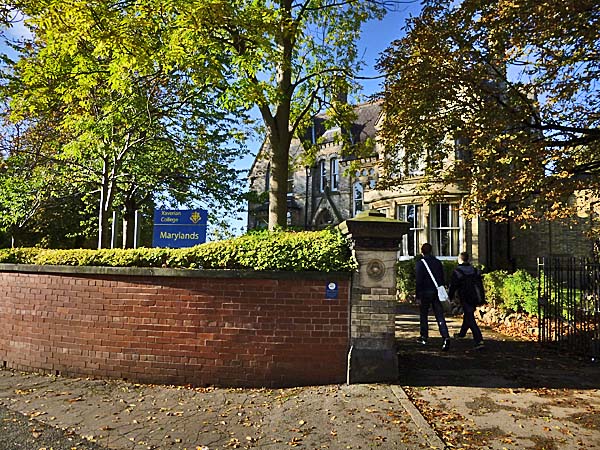 The Manchester Compendium
by Ed Glinert says that Regent House was
built for Henry Roscoe, the pioneering
chemist who, "... worked at Owen's
College and built the first modern-style
chemistry laboratory in Britain.
In 1858 Roscoe created the world's first
flash photo. The house contains
some features introduced by Roscoe, such
as a set of antique Germanic door
handles donated by Robert Bunsen, after
whom the Bunsen burner was named."
Sir Henry Enfield Roscoe FRS was born in
London in 1833. He was educated at the
Liverpool Institute for Boys and then
University College London. After
leaving University College he went to
Heidelberg to work under Robert Bunsen. In
1857, he was appointed to the chair of
chemistry at Owens College replacing
Frankland. He held that post for 30
years. As the plaque below (on the
original Owens College building on Quay
Street) says, during his time at Owens
College he played an active role in the
transfer of the college to its Oxford Road
location where it became the Victoria
University. In 1885 he became the MP for
Manchester South a position he held for 10
years.
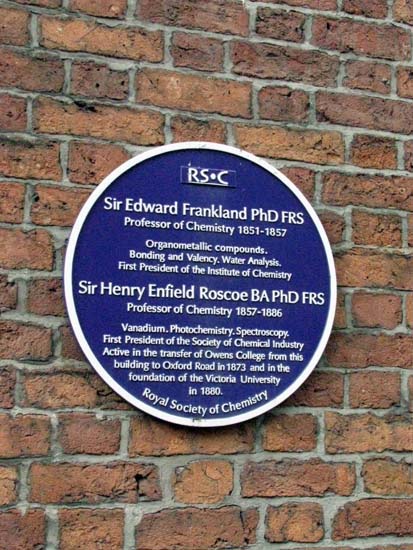 ********************** Upper Park Road Turning onto Upper Park
Road the first thing to catch your eye is
the Manchester Central Mosque and Islamic
Cultural Centre. Work began on
building the mosque in 1971 on the site of
two former houses. Over the years the
building has gone through a number of
expansions and modifications.
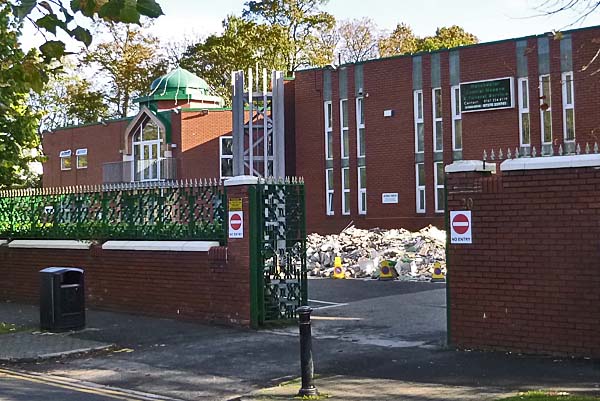  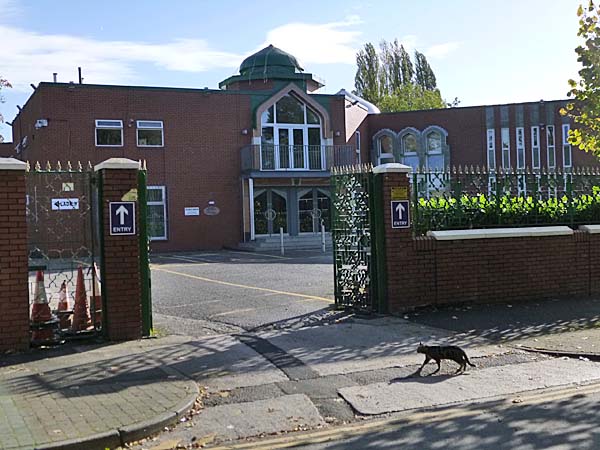 The building on your left as you turn the corner into Upper Park Road from the south, is called Langdale House. It was built in 1846 to a design by Henry Bowman. Pevsner says of it, "... Symetrical front with steep gabled bays, ashlar but with small masonry blocks. The detail is Tudor." 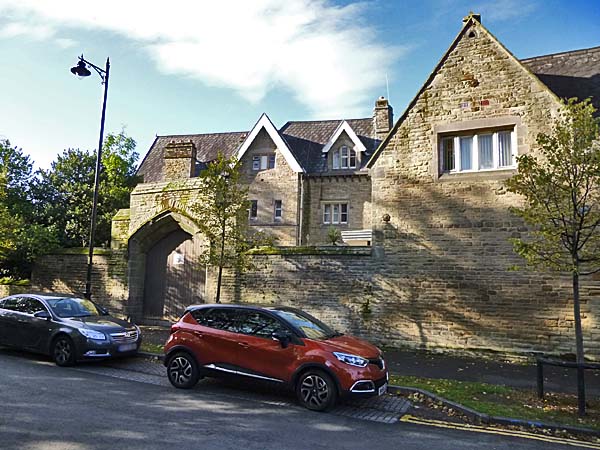 Between 1846 and 1874 this was home to Edward Riley Langworthy, MP for Salford and between 1848 and 1850 Mayor of Salford. The "Life Times Link" Issue no26, November 2009 has an interesting article about Langworthy by Hester Hughes. It gives an insight into the man's life. "Originally from London, he was born in 1797. When Edward was barely old enough he took a position working for C. Taylor and Sons & Co. Edward remained at this company for many years and was their representative in South America and Mexico for 12 years. The trade experience in foreign lands was to prove very influential, not only in meeting all kinds of people from a variety of backgrounds and nationalities but also in his financial success. This would later benefit Salford in the many bequests he made to organisations within the city. 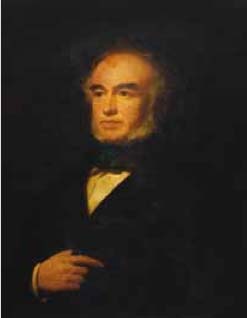 In 1837, at the age of 40, Edward set up business as a foreign merchant in London and three years later, in the year Queen Victoria married Albert, he moved to Salford. Edward joined his brother, George, in the cotton industry, in their new firm Langworthy Brothers & Co based at Greengate, Salford. On moving to Salford, Langworthy was incredibly busy. His business flourished with a warehouse full of stock constantly on the move. He was chosen as the first Alderman for Trinity Ward in 1844, became a member of three council committees, and in 1848 was elected the fifth mayor of Salford. Despite all of this, he managed to contribute considerably to the establishment of the countryís first free municipal public museum and library. And, in 1850, Salford Museum and Library was finally opened to people from all walks of life." Further along Upper Park Road, on the same side is Ellersle Court, now apparently subdivided into apartments. 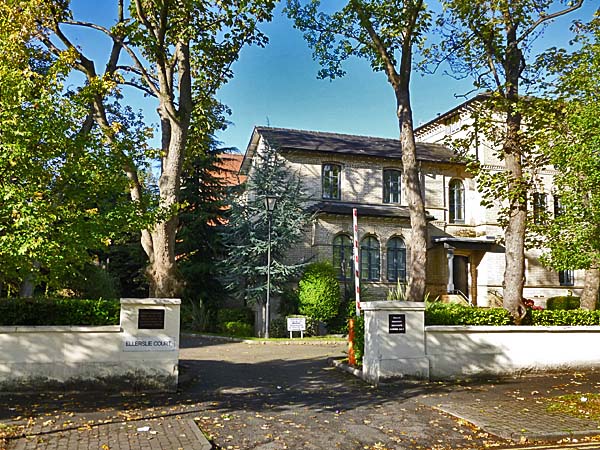 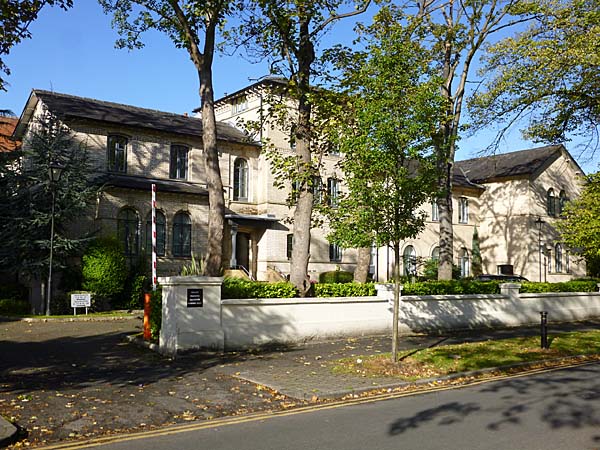 Crossing back to the east side of the road you find High Elms home to Startmc is an arts-based mental health service for adults, part of Manchester Mental Health and Social Care NHS Trust's Recovery Pathways care group. 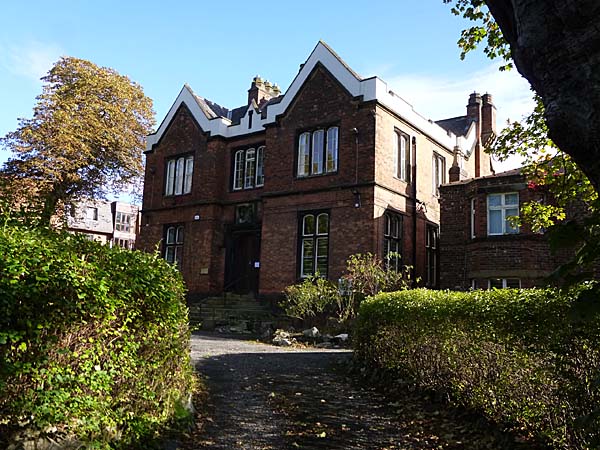 Between 1867 and 1895 it was home to Robert Duckinfield Darbishire a man who was associated with the foundation of Owens College, Manchester High School for Girls and Whitworth Art Gallery. 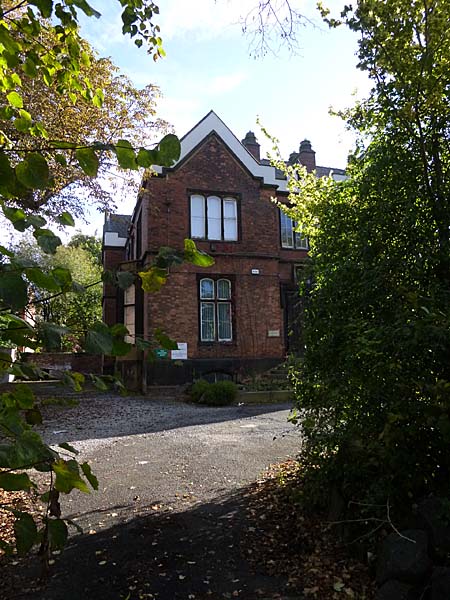 ************************* Conyngham Road Conyngham Road is dominated by the University of Manchester's Dalton-Ellis Hall. 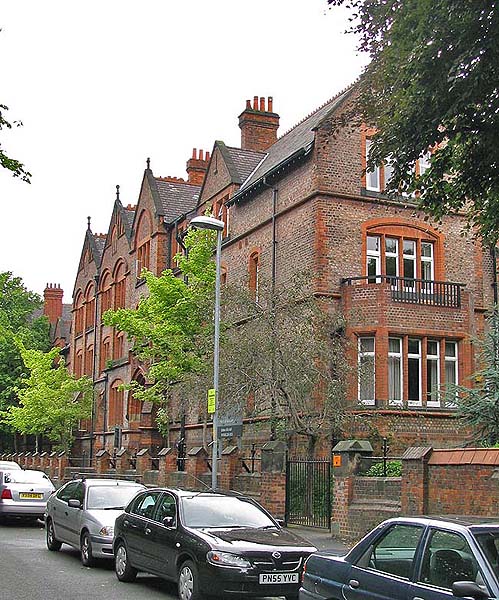 Built between 1881
and 1882, Dalton Hall was designed by
architect G. T. Remayne for the
Quakers. the rather plain facade
of brick with stone dressings, features
a rather beautiful terracotta panel
above the entrance.
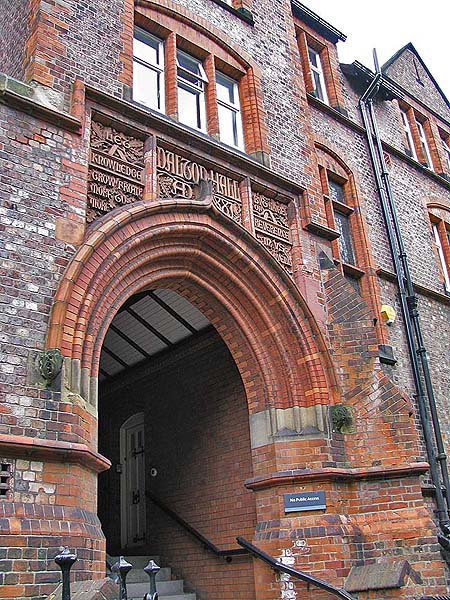 The
University says of the site that, "Dalton-Ellis
Hall was formed in 1987 from two
long established and neighbouring
Halls of Residence, one founded in
1876, the other in 1919. The
Hallís seven buildings occupy
spacious, well-tended grounds in
Victoria Park, only one mile from
the University campus on Oxford
Road and one and a half miles from
the Sackville Street Campus. The
Victorian Main Hall was the first
purpose-built Hall of Residence in
the country, but has been
modernised without losing any of
its traditional elegance. There
are two other modernised Victorian
buildings, three modern
residential blocks and a dining
hall complex opened in 1990. In
September 1994 three new
residential blocks were opened
offering a further range of
accommodation amenities. One, for
about 80 students and named
Sutherland, is an integral part of
the Hall and has rooms with en
suite bathroom facilities."
Across the road is Lane
Court attributed to the founder of the Park
Richard Lane, the architect of the Friend's
Meeting House in Manchester's city centre as
well as Salford and Chorlton town
halls. The style is Greek with an
Iconic Portico.
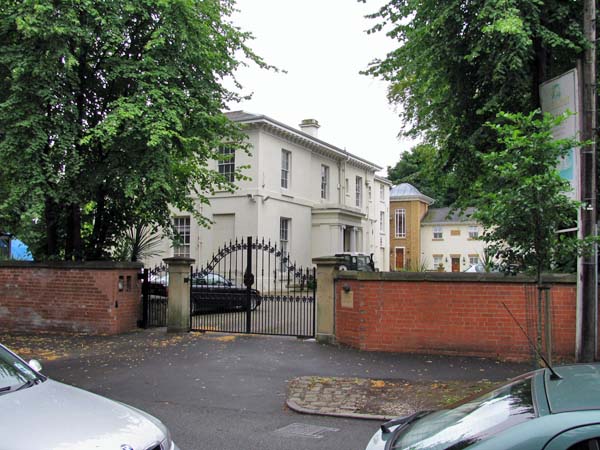 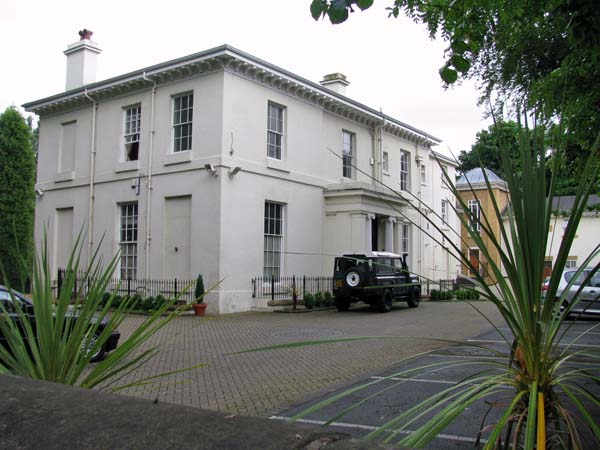 Apparently
it was originally the home of George
Hadfield, described as
an English lawyer, author and radical
politician who represented Sheffield for
22 years and the co-founder of the
Anti-Corn Law League. He died at
Lane Court in 1879 at the age of 92.
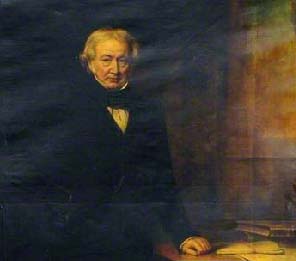 |